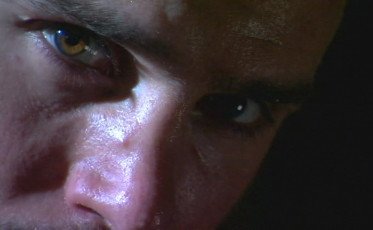Some fighters, be they at the start of their career, at the middle or even coming towards the end, come back stronger after suffering their very first defeat, while other fighters are never, ever the same again after tasting the pain of losing.
Great fighters such as Muhammad Ali, Sugar Ray Robinson, Thomas Hearns, Roberto Duran, Sugar Ray Leonard, Bernard Hopkins and James Toney have over the years proven how there is so much more than holding an unbeaten record in boxing; each legend returning from a loss with a vengeance. However, some fighters, a number of them closing in on greatness at the time, were all but finished, at least compared to what they had been, after losing their “O,” their prefect record.
Here are some notable examples:
Jeff Lacy
Lacy, an unbeaten super-middleweight ruler who was being called by some, a mini-Mike Tyson, was also seen as the next 168 pound superstar. A big favourite to win when he travelled to the UK to fight rival super-middleweight champ Joe Calzaghe in March of 2006, Lacy, 21-0, left the arena, over a thousand punches later, as a 21-1 fighter. Lacy fought on but he never came close to regaining his previous form or reputation. Calzaghe never looked better than when administering this hammering.
Don Curry.
At 25-0 and holding all three recognized belts at welterweight, Don Curry was being called “the next Ray Leonard.” Seemingly unbeatable, Curry had speed, brutal power (see his chilling KO over Milton McCrory) and great all-round boxing ability. Shockingly, however, all of this counted for nothing on the night of September 27, 1986. Curry met whopping great 9/1 outsider Lloyd Honeyghan and, simply put, he had the fight knocked right out of him.
Honeyghan battered Curry to a stunning sixth-round corner retirement defeat, ending “The Lone Star Cobra’s” three year reign of dominance. Curry did briefly reign again, as WBC 154 pound champ, but never again did he look like an all-time great.
Kelly Pavlik
The murderous puncher who put Youngstown back on the map sports-wise enjoyed only a relatively brief reign as world middleweight king. Pavlik, a genuine blue collar hero who thrilled millions with his all-action, come forward ring approach, was, like Lacy, a big favourite when entering the fight that would see him lose his unbeaten record. The crafty, the wise, the cerebral Bernard Hopkins took a wide, commanding decision over Pavlik in October of 2008.
After the loss, one that left him as a 34-1 fighter, Pavlik was still the middleweight ruler (the Hopkins fight being a non-title catch-weight affair) but his run as a great and self confident champion was over.
Jermain Taylor
Taylor, who also ruled the middleweight division (beating Hopkins twice along the way) ran into a peak and bristling Pavlik in September of 2009. At the time, though he was a dominant and long-reigning champion, Taylor was an unpopular fighter who had picked up a deserved reputation as being a boring and passionless fighter. Taylor went right after Pavlik, perhaps aiming to disprove his bad rep. Seven rounds later he had been KO’d quite brutally, his 27-0-1 record replaced by a 27-1-1 ledger.
Taylor fought on – even winning back the IBF belt in 2014 – but he went on to lose via two more disturbing, damaging KO’s. There is no doubt, Pavlik took something away from Taylor in the first of their two fights (Pavlik decisioning Taylor in a non-title return later in 2009).
Meldrick Taylor
“Two seconds from glory,” screamed the headline of one boxing magazine cover after Taylor’s stunning, unforgettable March 1990 battle with Mexican legend Julio Cesar Chavez. Taylor, then 24-0-1 and putting his IBF 140 pound title on the line as Chavez risked his WBC crown, gave Chavez a beating at times and was, famously, ahead on points and just seconds away from a decision victory when he was shocked by Chavez in the 12th and final round of a classic fight.
The TKO loss referee Richard Steele put on Taylor’s record was hugely controversial, but in hindsight, the punishment Taylor took in the fight proved to be far worse. Taylor managed to move up in weight and capture the WBA welterweight title, but he was never again the same blinding force he had been prior to going to war with the 68-0 Chavez.
John Mugabi
Known as “The Beast,” Mugabi was just that, compiling a perfect 25-0 record, all wins coming by KO; a number of them down at 154 pounds. One boxing magazine asked on its front cover this question: “Mugabi: Does he have any weaknesses?” As it turned out, it took the even more fearsome Marvelous Marvin Hagler to expose these weaknesses. But what a war Mugabi gave middleweight king Hagler in March of 1986! The two traded quite ferociously for ten-rounds, before Hagler’s strength, toughness and sheer resilience forced Mugabi to wilt.
Mugabi did rule again, briefly owning the WBC light-middleweight belt, but Hager really did tame him.
Naseem Hamed
Arguably the poster boy for fighters who were never the same after first experiencing defeat, “The Prince” was seemingly on his way to greatness or, as he put it, being a legend, ahead of his April 2001 date with destiny. Trained by the great Emanuel Steward at this stage of his career, the featherweight power-puncher signed to face Mexican warrior Marco Antonio Barrera. But Barrera, switching tactics from brawler to smart boxer, both confused and hurt Hamed, pretty much taking him to school over 12 engrossing rounds.
A unanimous decision loss saw Hamed fall to 35-1 as a pro and, after just one more fight (a dull, less than impressive points win over one year later) the Sheffield southpaw vanished from the sport. Later ballooning in weight in quite gross fashion, Hamed is today almost unrecognisable from the superstar he once was. Hamed, who had a return fight for the taking, instead wanted nothing more to do with Barrera.
